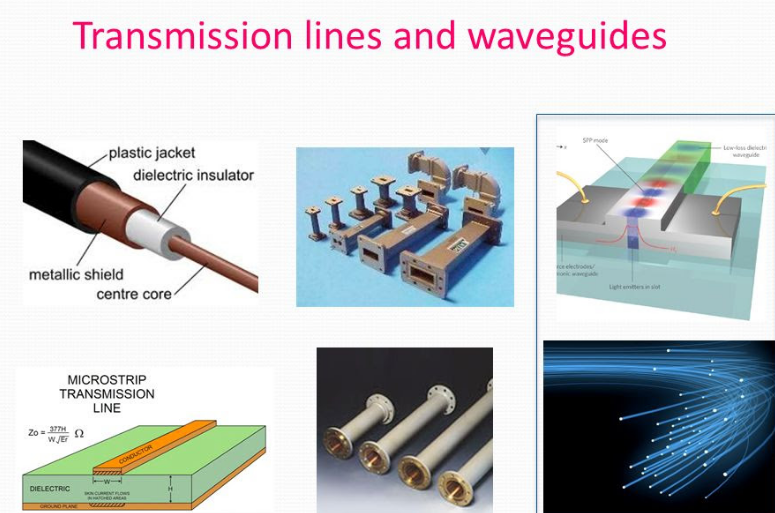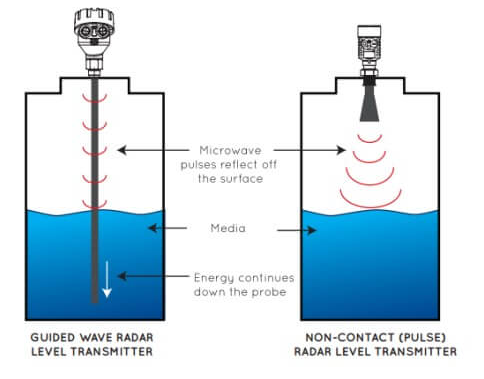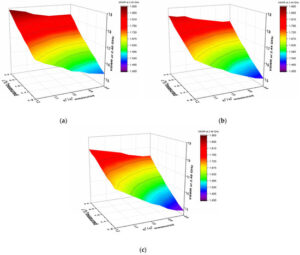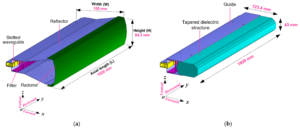Table of Contents
Waveguide vs. Guided Wave: Core Differences
Waveguides and guided-waves are essential features in the study of electromagnetics and have numerous applications in telecommunications, signal processing, and sensing . Knowing the differences between the two concepts is critical for the design and development of electromagnetic systems. A waveguide is a physical structure that guides or directs electromagnetic waves from one point to another . Examples of waveguides are hollow metal pipes or optical fibers, designed to contain and guide energy efficiently . Waveguides can support several modes of transmission, each with specific field patterns and propagation constants . By implication, these modes combine to ensure that the transmitter, which could be a pulse of light traveling through the optical fiber waveguide, can achieve efficient transmission through a series of reflections that could be at different angles along the waveguide . Guided-waves are the energy or electromagnetic waves restricted to a section of the waveguide or material system. These waves are fundamentally dependent on the properties of the material and the geometry of the confining structure . The differences between the two concepts of waveguide and guided-waves are premised on the role of the objects in the transmission of electromagnetic energy.
Materials and structures are one significant difference between waveguides and guided waves. As already established, waveguides are made of metals such as copper and ferrous materials or fiber optics. In the case of optical fibers, the diameter of the fiber can affect the ability of the light to propagate in the transmitted mode . A typical size of the core is between 8 and 10 micrometers . Is a general term that describes how the wave is guided along a medium, and it does not specifically suggest the material used. In addition, guided waves could experience higher losses interacting with material effects in extended mode transmission systems. Another difference is that waveguides tend to have a high power handling rate and low loss. For example, copper waveguides can carry power up to several kilowatts, which is more than 90% efficient. Is not optimized in the same manner, and it depends on how the wave is perpendicular to the interface of the material. Too much power in a waveguide transmission environment could cause scattering, absorption, and dispersion making the guided-waves less efficient by losing power. Separating these concepts is the fact that waveguides are designed and optimized for specific applications, in this case for light transmitters in the case of optical fibers, and guiding medium across long distances . Describe a general concept where waves are guided along a material, and as such, the waves can be personified by any object as they are often found in ceramics, metals, and other objects.
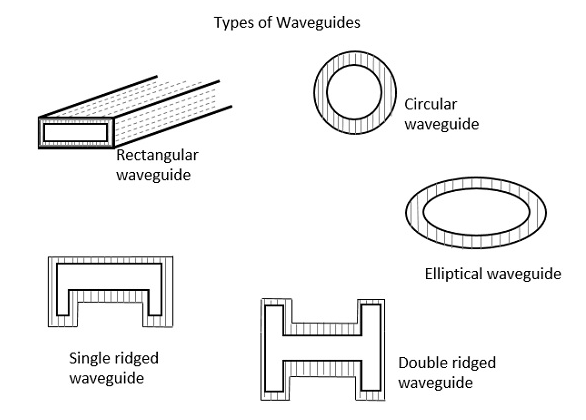 Practical Implications of Differences
Practical Implications of Differences
Differences and practical implications
Differences between waveguides and guided waves have severe practical implications on telecommunications, sensor technology, and other fields. In telecommunications, the use of various waveguides, such as optical fibers, or other forms of guided wave transmission, planar waveguides, influences bandwidth, signal integrity, and cost. Optical fibers provide the widest possible bandwidth and best signal integrity over the longest distances, with an attenuation on the order of 0.2 dB/km, allowing fast internet access across the globe. Planar waveguides in integrated circuits provide a cheap and compact solution for transmitting data over shorter distances, with an attenuation on the order of 0.5 dB/cm depending on the material. The sensitivity to parameter changes which guided waves exhibit is of great use in sensor technology, where such waves may be used in a wide variety of sensors, from biomedical sensors to structural health and environmental sensors. Guided waves clear a path for such technology because the surface acoustic wave sensors are able to detect increasingly smaller amounts of change in variables such as mass, pressure, and temperature . In such cases, it is the electromagnetic compatibility of the sensor head which enables the radiation as a guided wave.
Besides the wide use in diagnosing human disease with exceptionally sensitive sensors, guided-wave technology is also used for high power applications. In radar and communication applications for satellite such as space radar, the power handled by the waveguides is extremely high. Since every decibel of loss is significant at such high transmission distances, the waveguides must be as efficient as possible. Therefore, both dielectric and metallic waveguides are designed to minimize power loss and are sometimes coated to additionally reflect energy. The power handled by such waveguides is very high, with examples of up to kilowatts for everyday uses and megawatts for short pulse radar made from meters of metal or dielectric waveguides. Again, these properties are essential for use in satellite technology, where the least possible attenuation is necessary to keep signals from being swamped by the distance. The most important practical factor for waveguides like these is their cost of power transmission, as discussed above. The manufacturing cost is also something significant to consider, since the manufacturing cost of hollow metallic waveguides for microwave frequency is substantial because of the precision machining and welding work required. The factors like manufacturability, efficiency, cost, which are influenced by the electromagnetic properties and attenuation, must all be considered when designing a guided-wave transmitting system.
Designing Waveguides for Specific Applications
The design of waveguides for specific applications requires a close attention to the waveguide’s electromagnetic properties, material science, and the expected operational environment. The task of designing a suitable waveguide is then the optimization of its dimensions, material properties, and structural set-up to the requirements of a certain application, such as telecommunications, sensing, and others. The primary application of waveguides is telecommunications, in particular, optical fibers. The design of such waveguides focuses on reducing the major losses and providing a very high bandwidth. The optical fiber for long-distance communication should have a small core diameter of 8 to 10 micrometers, which allows for single-mode propagation, minimalizing dispersion and providing data rates of several terabits per second . Silica is the preferred material, as it has low absorption and scattering losses, with the lowest attenuation of 0.2 dB/km at the perfect transmission window, which is around 1550 nm .
Microwave communication systems employ, another major type of waveguide – metallic waveguide or, specifically, rectangular and circular waveguide. An example of the design of the latter is a standard WR-90 rectangular waveguide, assigned to the X-band and the operational frequency range of 8 to 12 GHz. This waveguide has the perfect frequency range of performance and minimal loss of energy at the dimensions of 22.86 x 10.16 mm . The design of these waveguides is based on the concept of the cutoff frequency, which is any frequency of the electromagnetic wave that is less than the lowest cutoff frequency transmitted by the waveguide.
Sensing applications are focused on understanding how various changes in the environment influence the metrics of the waveguides.The antenna is designed such that it maximizes the interaction between the guided wave and the measurand . A common use of surface acoustic waves SAWs is when piezoelectric lithium niobate is used and spaced IDTs of the same order as the acoustic wavelength. These are designed to be sensitive to the physical or chemical properties of a certain environment and are capable of detecting changes of a fraction of a nanogram . These measurements are crucial for designing sensors for chemical applications or biological assays.
From the perspective of medical applications, an optical fiber may be specially designed for visualization and phototherapy using a similar mechanism. The guiding environment, as well as the diameter and flexibility of the waveguide, may be adjusted to suit operation in tight, bendable, or tethered medical environments . The fiber designed for delivering laser therapy may be constructed from a core that is doped with rare-earth elements to deliver the required laser wavelength and coated with a cladding to provide the mechanical guidance and flexibility. The selection of materials is, therefore, paramount in this technology: in addition to the optical transparency of the cladding, it is necessary to have materials of sufficient purity to ensure minimal attenuation .
The third important aspect that influences waveguides’ design is the cost, especially at large scales as it usually stands as a prohibitive factor. Doped silicon has become an attractive option as a material for waveguides because it uses many of the same processes as silicon-based microelectronics, which makes the process much less costly than it would have been only five years ago. Other materials are also relatively inexpensive.Waveguides require extra coatings and/or doping, and meeting the requirements of low-loss physics implies controlling the shape with high precision. All of these factors add to the cost and can make the process prohibitively expensive when dealing with small production batches. While the costs can be offset by the benefits of mass production, the final cost of materials and initial setup cannot be ignored when considering the utilities of waveguides in any given situation.
Modifying Guided Wave Characteristics
One of the central practices of guiding waves is the alteration of their physical properties to modify their propagation. In many applications, one of the most common modifications is the change in speed. This process is governed by the waveguide’s material, in particular through the manipulation of its refractive index. In the case of optical fibers, the change in a fiber’s core material allows the modification of light’s speed within the waveguide. One of the common approaches in optical communication is the use of silica fibers doped with germanium . The doping increases the material’s refractive index and the speed at which the light travels. The property is critical in the management of dispersion in long-distance communication lines, allowing signals at different frequencies to arrive simultaneously at their destination. For a typical silica fiber, the index is estimated to be about 1.46, while doping might increase this number to 1.48 or higher, depending on the application, having an important impact on signal spread over several thousands of kilometers.
Control of the wave’s direction is another modification applied to various applications. In planar waveguides, photonic crystals and waveguide bends can be used to control the direction . They can be used to reflect or bend waves to direct them along a specific path in an integrated photonic circuit. The process is vital for the creation of compact and high-density photonic devices, when the light cannot leave the waveguide and must move efficiently along it. Another modification that is used in practice is the alteration of the waveguide’s mode to ensure appropriate coupling into and out of the waveguide or filtering . In the case of multi-mode fibers, the solution to modal dispersion is the design of a waveguide that only supports a single mode of light . In this case, the light at around 1550 nm propagates in a core with a diameter of approximately 9 micrometers, ensuring that only the fundamental mode will propagate and travel vast distances at high speed.
External fields can change the characteristics of guided waves as well. If an electric field is applied to a waveguide made of an electro-optic material, say lithium niobate, the refractive index of the material may change and light guided by the waveguide may be modulated . The effect is used in modulators and switches, which are integral parts of any optical communication system. The change of refractive index might be of the order of 0.01, but that is enough to modulate light at GHz frequencies. Temperature might be used to modify the characteristics of guided waves as well. The speed of sound in a material is an acoustic wave, which is a type of guided wave, and this speed might depend on temperature . If the sound is a guided wave, light used to detect the sound generation is confined in the same way and can be used to estimate the changes of the environment.
The cost is a factor to be taken into account when modifying the characteristics as well. If that requires expensive materials or costly technological process to make a waveguide the whole system it is used in may become too expensive for any practical application. The process of doping optical fibers with rare-earth ions to make it work as an amplifier is not cheap, although it can be economically justified due to extra performance, particularly enabling transcontinental optical communication without electronic repeaters in the optical domain made necessary by conductive properties of optical amplification with impurities . The use of different materials and new technologies to engineer them is the central issue to modify the characteristics of guided waves. This is a physical process and the physics analyses the process of wave propagation and the interaction of waves with matter. New materials and new technologies of making them offer new ways to modify guided wave characteristics all the time.

